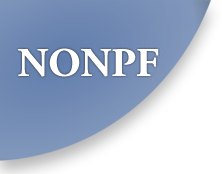The Affordable Care Act: On Your Mark, Get Set, Go!
Innovative practice models such as Patient-Centered Medical Homes and Accountable Care Organizations are transforming healthcare delivery. Cultivating an infrastructure which improves access to care, clinical outcomes, and empowerment of the patient are central elements to the healthcare reform. In alignment with the Institute of Medicine report (2011) provisions in the ACA will yield to increased opportunities to advance nursing practice.
The future of healthcare will be prevention driven revolving around quality, evidence-based practice and fostering a relationship between the patient and healthcare provider (Halloran, 2013). On the forefront, efforts to improve the current fragmented healthcare system through the ACA with integration of health promotion and disease prevention behaviors is key to improving outcomes. Primary care providers are pivotal to controlling healthcare expenditures by care coordination, reducing the duplication of costs, ensure appropriation of speciality care (Ein & Jefferson, 2014).
Healthcare expenditures in the United States totaled $2.6 trillion (CDC, 2013), of which 75% was attributed to chronic disease (CDC, 2014). The Kaiser Family Foundation Report (2013) illuminates the ominous state of health care expenditures in this country with an estimated loss of $309 billion annually for direct and indirect costs associated with these groups.
The ACA will continue to evolve. Working collaboratively across interdisciplinary teams will serve as conduit to improve outcomes. Advance Practice Nurses are well situated to fulfill the health care needs across the continuum. What lies ahead is unpredictable, except for unforeseen sequelae of the ACA embarking upon new ground.

